Seeking out healthy and delicious Costa Rican fruit is a tasty challenge.
In Puerto Viejo I struggled to find traditional Costa Rican food amongst the dollar shots, gluten-free bakeries and vegan cafes.
But there’s no doubt Costa Rica is a tropical paradise and so I came armed with 27 fruit in Costa Rica I wanted to eat that week.
It’s only four different fruit a day, totally possible!
And truth be told I did cheat a little bit.
After all, there are many fruits of Costa Rica that you can find in Mexico and Central America so I was able to check a few off my list.
Costa Rican Food
But also there were also a lot of fruit that I had never heard of in other countries. How did I miss these the last time I was in Central America?
In Costa Rica fruit is everywhere. One of my favourite moments on the Yorkin Bri Bri Community Tour was walking around with our guide Prudencio and he showed us all of the fruit around us growing on trees.
My second favourite experience obviously also included food. I took this cooking class in Puerto Viejo with Elena.
Not only did I learn how to make local Costa Rican food but she offered to have a look at my Costa Rican fruit challenge to tell me whether they were all even possible.
They weren’t.
I was out of season for some of the fruit. So I was disappointed but it also meant I could focus on the fruits in Costa Rica that were in season.
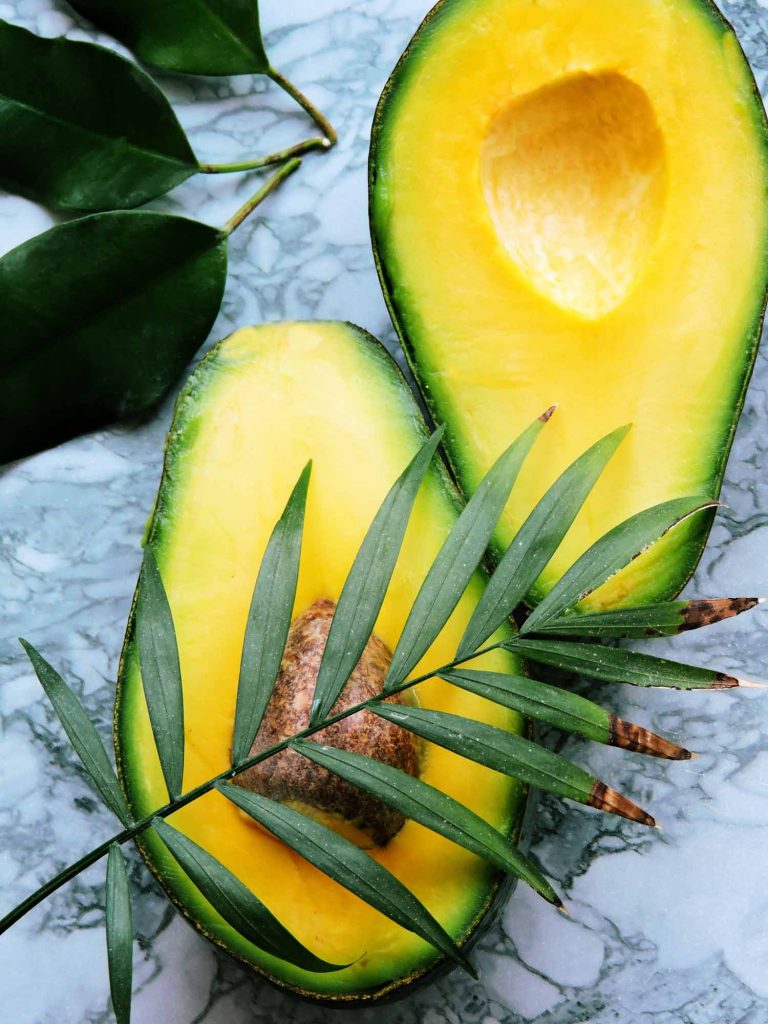
The Costa Rican Fruit Challenge
To help others I’ve included all of the best fruits that were on my list.
And I’ve also included where to find it and the season – just because it’s a tropical country it doesn’t mean fruits in Costa Rica grow all year long.
Sadly I have only had twenty of these fruit in Costa Rica.
If you take the Costa Rican fruit challenge please let me know in the comments below how many you tried!
Costa Rican Drinks
If you want to sample a lot then you need to hit a farmers market but you need to go early.
The farmer’s market in Puerto Viejo begins at 6am and only runs until noon.
Locals are usually there at 6am to get the best local ingredients, after that it can be slim pickings.
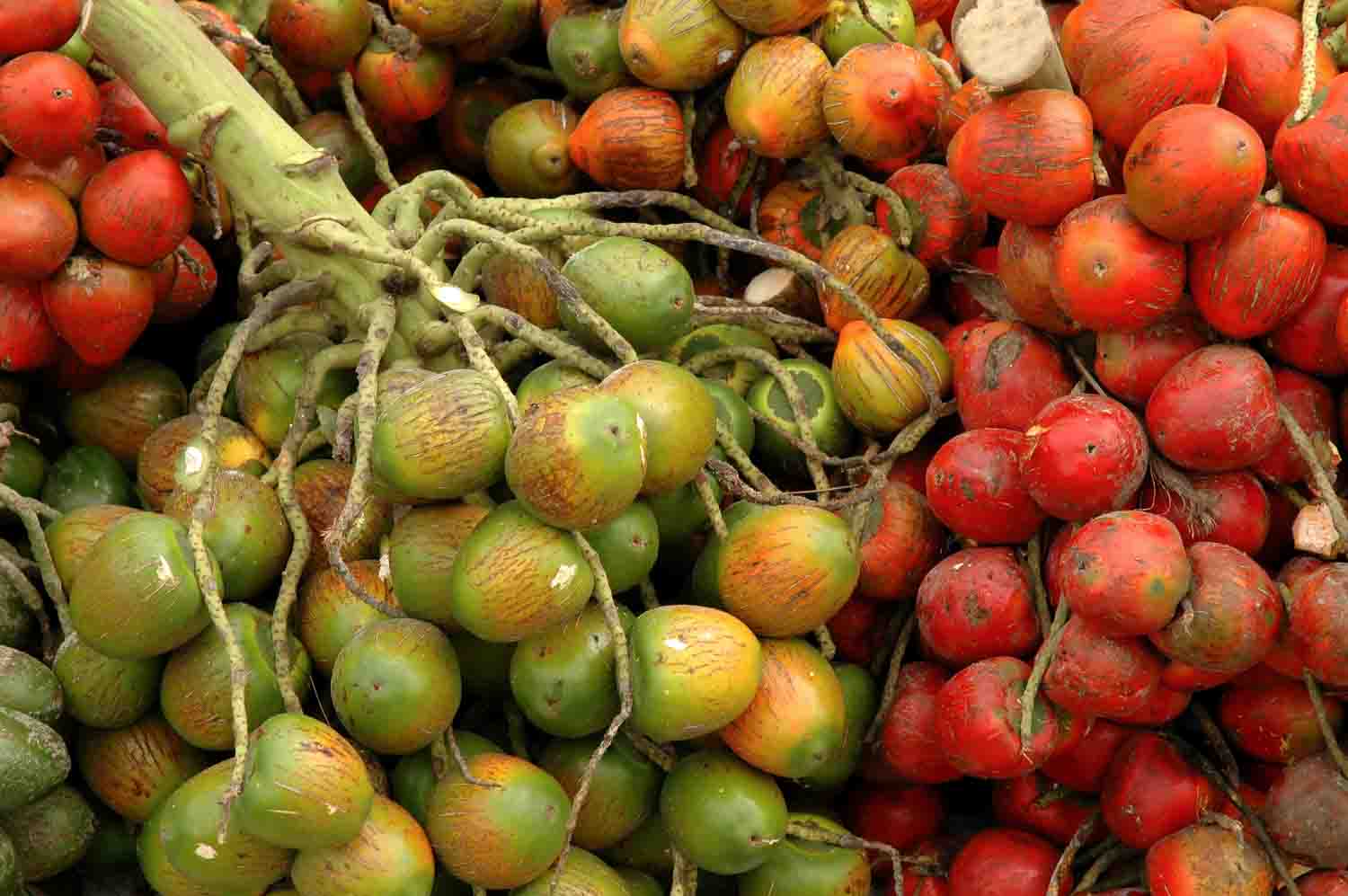
Pejibaye aka Peach Palm Fruit
Pejibaye are about the size of an apricot or large acorn and grow in clusters in tall palm trees.
They are usually bright orange and have a nutty flavour that some say are most like a combination of roasted chestnuts and roasted sweet potato.
They are high in antioxidants and considered very healthy.
Exotic Fruits
How to Eat Pejibaye
Although they are a fruit, like breadfruit or jackfruit you do need to cook them.
The good news is that pejibaye is almost always sold already boiled, but you may want to ask to be sure.
Then you simply need to peel and slice it.
They are usually served with a bit of mayonnaise or added to a ceviche.
Another very common way to eat this Costa Rican fruit is to turn it into cream of pejibaye soup.
It is one of the most traditional dishes in the country.
It can also be fermented into alcoholic chicha, but locals will warn you to be careful as the sweetness over masks how strong it is.
Where to Eat Pejibaye?
Every October there is an annual Pejibaye Festival in the small town of Tucurrique, which is most famous for growing this fruit.
Here you can try it in every form from bread and pastries to ceviche.
‘Guanábana aka Soursop
The Costa Rican fruit with spikes about the size of an American football, guanabana fruit is commonly found in both ice cream and smoothies.
Although the spiky skin seems intimidating, it is really one of the most refreshing fruits in Costa Rica and its flavour is most like a pear or a pineapple-kiwi combination.
It is known for its many health properties and many believe it can help combat cancer.
It is sold almost year round. As it’s so large and often weighs 5lbs or more it is common for vendors to cut it into quarters to sell.
How to Eat Guanabana
The easiest way is to turn it into a juice or smoothie. You can eat it raw.
Once cut open soursop the flesh is soft and can be pulled, almost like a string cheese. Do not eat the seeds.
It also makes excellent sorbets and ice cream if you have an ice cream maker. It is often called the ice cream fruit for its flavour and texture.
‘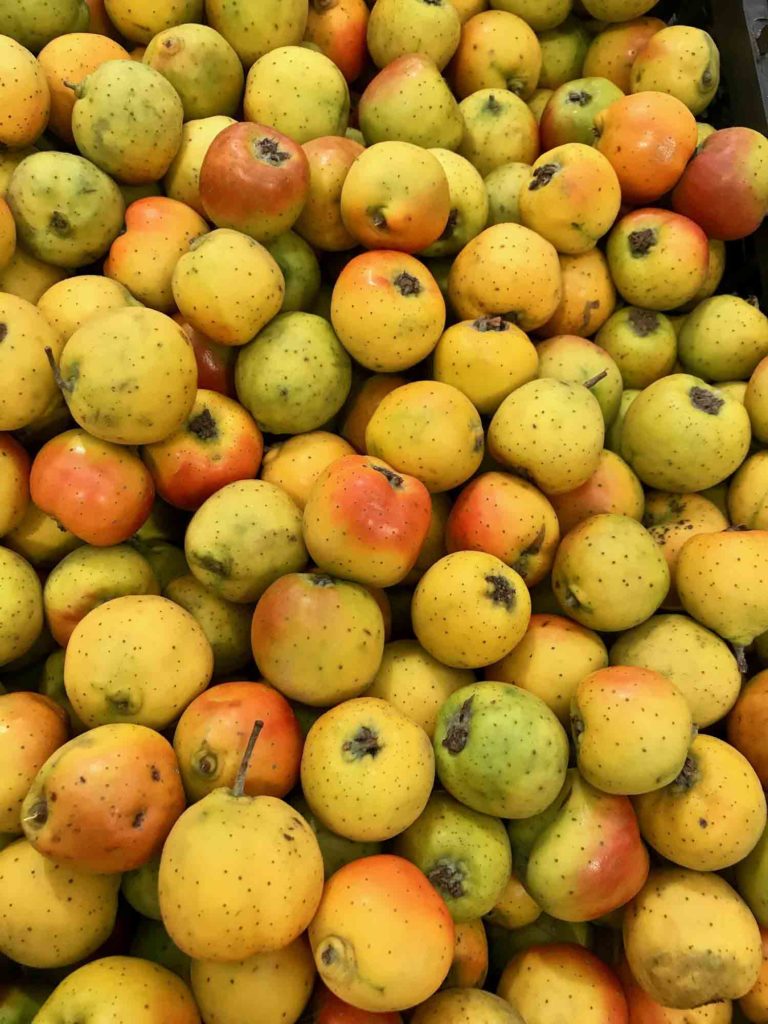
Jocote
One of my favourite Ecuador fruits, they are also known as purple mombin, red mombin, hog plum, jocotes look like a small plum but are actually part of the cashew family.
You can eat Jocote in Costa Rica during the dry season, in August through October.
How to Eat Jocote
Like mangos, they can be eaten green with a bit of salt.
Or if you wait a few weeks you can find them with a vibrant red colour, fully ripened and sweet. Both are great options.
Guaba aka the Ice Cream Bean
So this one is a bit of a cheat in that guaba tastes like a fruit so it’s actually a legume so it’s technically a vegetable.
Also it is NOT guava, which is a different delicious fruit.
You can also find it in the Amazon in Brazil. It’s otherwise known as pacay or the ice cream bean.
It is a pod found in the backyards of many homes in Costa Rica. You can find guaba fruit in Costa Rica from January to June.
How to Eat Guaba
Like edamame, you need to split open the pod – but do not eat the seeds. Instead you eat the sweet pulp.
Some people think it’s too much trouble for such little fruit.
Caribbean Rice and Beans
Maracuya aka Passion Fruit or Lulo
There are actually more than one version of passion fruit in Costa Rica. The first is what we know as maracuya (passiflora edulis) and the second is granadilla (passiflora ligularis).
Maracuya fruit are purple on the outside, it quite weighty. You do not eat the seeds in a purple maracuya, which are quite bitter
Granadilla fruit have an orange oval exterior and very light. It almost feels like a piñata.
You cannot eat it by biting into it, instead you cut it open to eat the pulp and seeds.
Personally, I love it for breakfast with plain yogurt but some people don’t like the slimey nectar.
It is rich in vitamins A, C and K, iron, phosphorus and calcium. It is good for people who have high blood pressure.
Although maracuya is available all year long in Costa Rica it is best during rainy season.
How to Eat Maracuya
While many people enjoy passion fruit in a cocktail, smoothie or ice cream, it is common to eat it raw from the fruit.
‘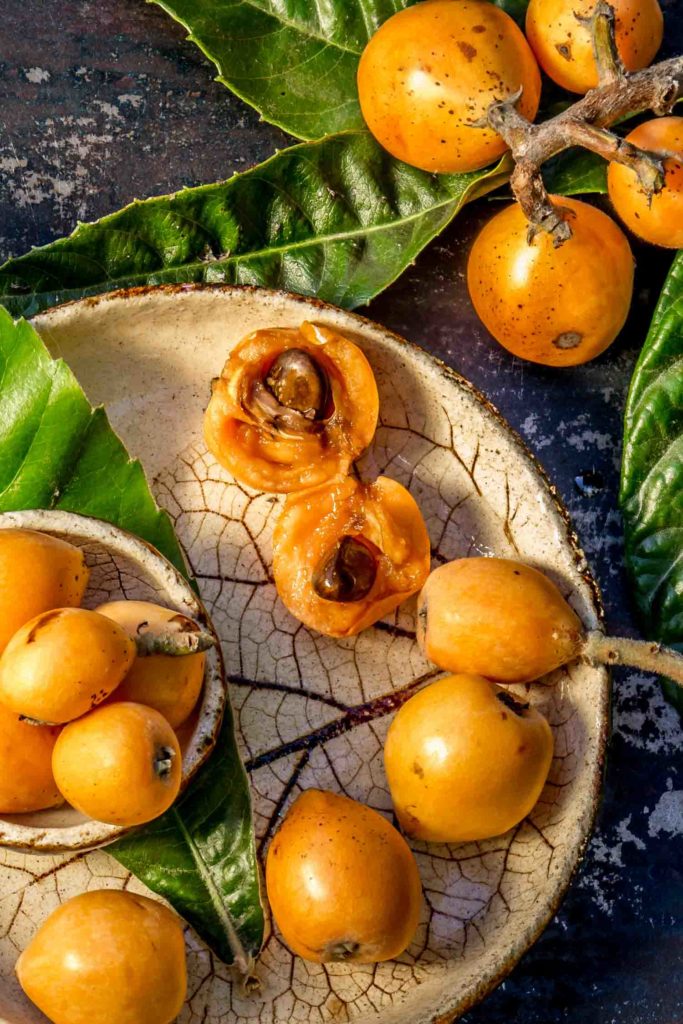
Nispero aka Loquat
Also known as Japanese plum, biwa, pipa or Japanese medlar, the loquat is a small oval stone fruit.
This yellow fruit grows from an evergreen tree and is originally from Asia but now can be found throughout the world.
Nispero is ripe in Costa Rica from February through June.
How to Eat Nispero
It can be eaten raw like an apple plum. It is also often used in cooking jam or other preserves.
‘Pitaya aka Red Dragon Fruit
The ultimate hipster fruit, this Costa Rican fruit is constantly featured on instagram smoothie bowls around the country.
The vibrant magenta dragon fruit is more flavourful than its white counterpart.
It is also a common Peru fruit and Thai fruit. It actually grows on a cactus that are often six feet tall or more and is available in late summer through autumn.
Pitaya is very nutritious with lots of antioxidants. It has edible seeds.
Pineapple Daiquiri
How to Eat Dragon Fruit
You can eat dragon fruit like you would any other fruit but it must be peeled.
It’s so pretty it’s worth keeping in tact rather than blending into a smoothie or ice cream.
‘Achiote
Achiote or annatto seed is most often associated with food in Mexico as this fruit’s seeds gives many Mayan and Mexican dishes its distinctive red colour.
However, it is also used in Costa Rica for the same reason.
It is used primarily for colour in traditional Tican recipes but it also has a mild peppery flavour.
How to Eat Achiote
It’s most commonly used in cooking as often bought prepared as a paste.
To make from scratch the fruit must be opened, seeds extracted and dried to make a paste or oil.
‘Bilimbi Cucumber (Mimbro)
A relative to the starfruit family, mimbro is also called cucumber tree, tree sorrel, grosella china in Cuba and Pepino de Indias in Argentina.
It’s a tropical tree that originated in Asia but in the late 1700s it was brought to Jamaica from Timor.
This Costa Rican fruit is a bit peculiar as it is not sweet and used in cooking to provide acidity and often a sour flavour.
How to Eat Bilimbi
It is too tart to eat raw so it is often salted or cooked to preserve it. Around the world it is used in curries and preserves.
In Costa Rica it is turned into a relish that is common with rice and beans or part of a casado.
Carambola aka Star Fruit
Star fruit is one of those fancy fruits that would I discovered in my twenties when I worked for an ad advertising agency and clients came in for lunch.
I certainly didn’t grow up eating them in small town Canada and I didn’t think I had missed much because they didn’t taste like much.
Because I wasn’t eating them when they were grown.
Carambola’s flavour is delicately sweet with just a hint of sour. You need to eat them when they are perfectly ripe – which never happens in Canada I guess.
Although carambola are available all year round they are best during dry season, July and August.
Star fruit are ripe when the green colouring is completely gone but no brown spots have appeared.
How to Eat Carambola
In the Yucatan in Mexico it is commonly made into a fresh fruit juice.
However, you can eat star fruit on its own as the entire Costa Rican fruit is edible. The freshness of the fruit is a great addition to a salad.
‘Carao
Carao is another under-appreciated fruit in Costa Rica as its flavour and scent are much more subtle.
Cassia grandisis known as a member of the pink shower trees, it grows from southern Mexico through to South America but it is almost always considered only ornamental.
Yet carao is quite nutritious and is known to be a great natural remedy for anemia.
How to Eat Carao
The plant pods can grow up to two feet long. The fruit is removed and heated into a syrup that resembles molasses.
It often appears as a natural sweetener and may be called jarabe de carao or miel de carao.
It’s also often mixed into milk.

Noni Fruit
The noni plant is one of those tropical fruits that hardly anyone know about in North America yet everyone else in the world has been consuming for thousands of years.
It originated in Asia, where it is very common to have it as a drink. I first discovered the fruit in Hawaii and it was praised for its nutritional value.
But it thrives in the Caribbean where it grows up to six feet tall and lives for eighty years or more.
The most interesting thing about noni is its flavour, because it doesn’t taste like a fruit at all.
It tastes and smells more like strong parmesan cheese.
For this reason it is often called cheese fruit, but is also called vomit fruit, Indian mulberry as well as great morinda.
Many cultures around the world only ate it when there was nothing left to eat so it’s often called a starvation fruit.
It can be eaten raw and is often cooked into stews and curries.
How to Eat Noni
This green fruit is often used in natural medicine (they say it cures everything from impotence to asthma) in the form of capsules and powders but it is possible to consume it fresh.
In Costa Rica it is most commonly used as a juice. Noni juice may often be mixed with other liquids as it is an acquired taste.
‘Marañon aka Cashew fruit
I had never seen a cashew fruit until I visited the Sao Paulo market in Brazil where these odd Brazilian fruits had a little nut on top.
It turns out that is where cashews come from. But why aren’t we eating the fruit in North America.
This fruit in Costa Rica looks kind of like a small bell pepper and are usually yellow, red or orange. It’s also one of many exotic fruits in Nicaragua.
And it’s made its way to Asia as well where you can find the Cambodian fruit in markets.
How to Eat Cashew Fruit
They are actually in the same fruit family as the mango and can be eaten raw. Cashew fruits are juicy and make great preserves and refreshing juice.
When visiting Elena to take a cooking class she gave me two to take home. If you find them whole do not eat the cashew nut as it is poisonous while raw.
Cashew nuts must be roasted.
‘Zapote or Sapote
I first discovered sapote fruit in Mexico, it was the first time that I had fruit with a spicy flavour. Different types of sapotes are found throughout the world.
The fruit in Costa Rica is the variety pouteria sapota or mamey sapote.
They look like a small potato with an ugly brown interior and inside they have a ruby caramel colour. But the flavour is almost like a sweet potato pie or brown sugar.
How to Eat Sapote
Simply peel them, it’s not necessary but I think it’s better. They are delightful raw, but amazing as ice cream or even a juice.
‘
Fruta de Pan aka Breadfruit
Did you know there is a breadfruit institute in Maui with over 300 varieties? I’ve been to it twice. In Hawaii it is called ulu.
I’m fascinated with fruta de pan because it is such a nutritious Costa Rican fruit with lots of vitamins and nutrients.
It grows prolifically in areas where other foods do not, like Africa, and could be the solution to food insecurity in many areas.
Originally Polynesian, it is one of the fruits in Jamaica immigrants planted it in Limón. It can grow quite large and look like a jackfruit.
It’s also a common Malaysian fruit and grows in South East Asia.
How to Eat Breadfruit
Although it is a fruit, fruta de pan is actually a starch and can replace potato in many recipes.
When ripe it must be cooked. The exterior is as tough as a pineapple so I sharp knife is needed.
When it’s overripe it becomes a sweet custardy pudding that can be eaten with a spoon right out of the plant.
‘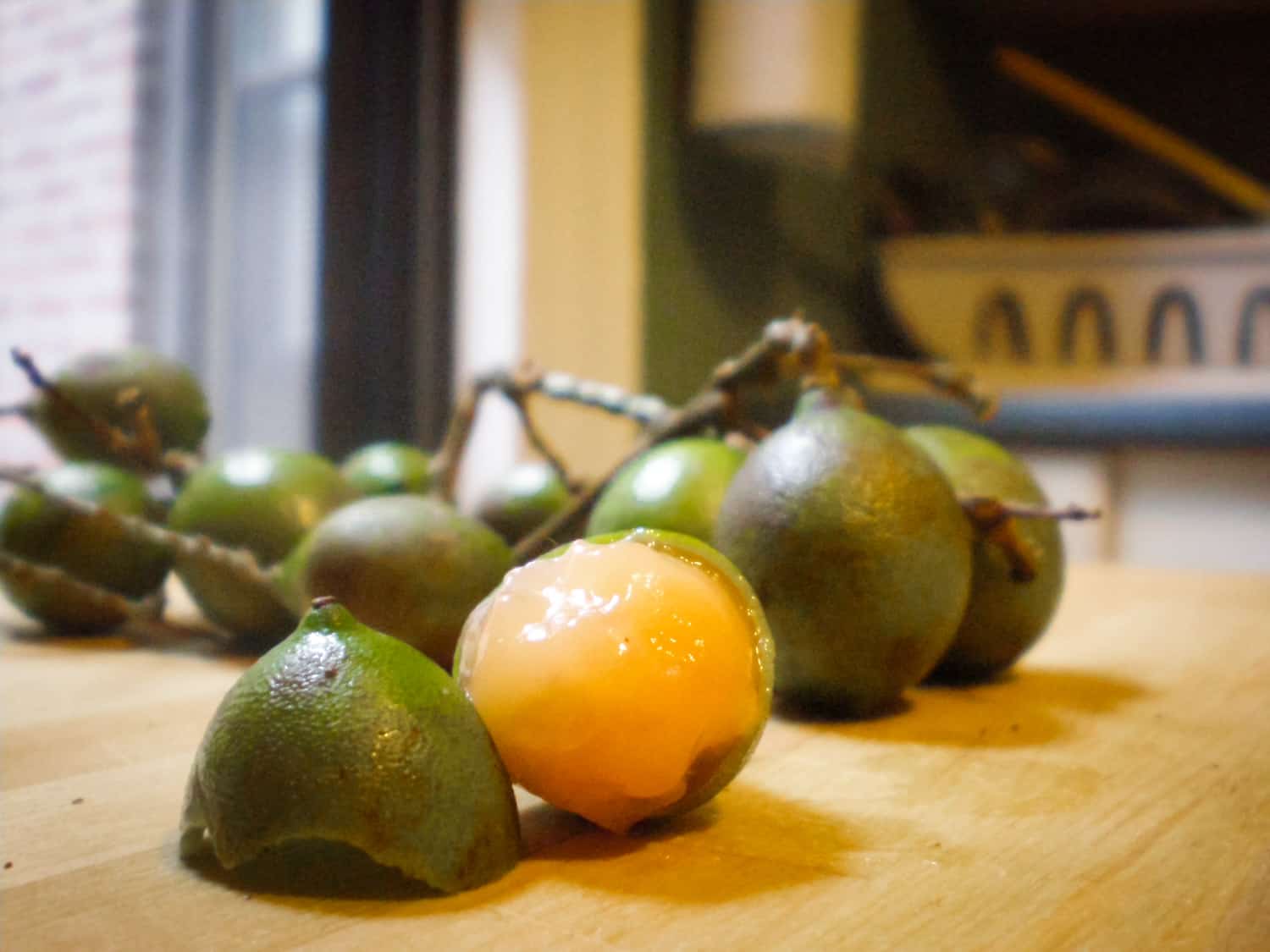
Mamoncillo or Mamón aka Spanish Lime
A small round green fruit that grows in bunches, it has a peachy-yellow pulp that protects a seed, similar to a lychee.
Mamoncillo has a citrus flavour which is why it’s often called Spanish lime. However, it is also known as lemoncillo, quenapa, genip and guaya.
How to Eat Mamoncillo
You can eat it raw by opening the fruit with your teeth and then sucking the fruit pulp.
‘
Caimito or Star Apple
Related to the sapote family, caimitos are usually purple with a purple pulp. However it is possible to find green caimitos with a white fleshy interior.
It is the size of an apple or orange but looks like a star when sliced. The flavour is most similar to a mangosteen. Caimito is in season from January through April.
It’s also found in South East Asia and is a popular Lao fruit.
How to Eat Caimito
This Costa Rican fruit can be eaten raw. It is also possible to buy caimito jam and other preserves.
‘Soncoya
Soncoya are another spiky fruit in Costa Rica, that look similar to durian or small jackfruit. It is part of the annona family, like cherimoya
And while it has the same tough fibrous flesh similar to soursop, the flavour is much more like a sweet fruit and is often compared to peach or apricot.
Soncoya are in season in the fall, beginning in September.
It’s best to buy one that has been cut open as the exterior colour does not change so it is not easy to tell if it’s ripe.
However it can be difficult to find in smaller villages as it has the reputation of being “unwholesome.”
How to Eat Soncoya
It can be eaten raw and is often turned into a juice.
‘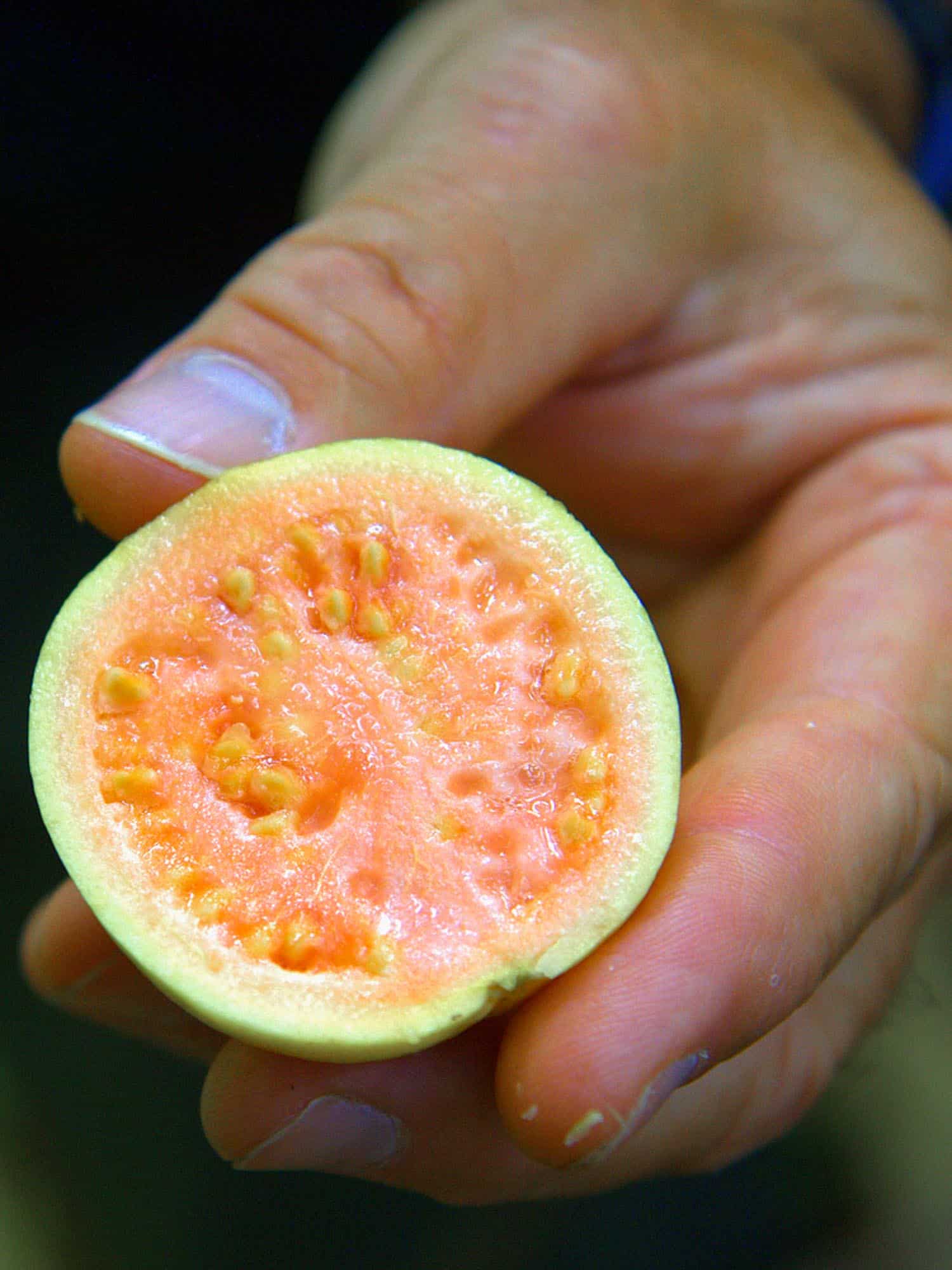
Guayaba aka Guava
Guava is famous all over the Caribbean. It’s a common Cuban fruit staple for desserts. In Costa Rica guavas are just as beloved.
It has a thin, bitter rind and inside the edible seeds and flesh taste much like a sweet, refreshing pear. Its interior ranges from white to pink.
It should not be confused with cas fruit, which is known as Costa Rica guava in English.
You can find this fruit throughout Latin America, but also South East Asia as guava fruits in Vietnam are commonly sold on the street.
How to Eat Guayaba
It is great any you have it. It is delicious raw, cooked as a preserves or in a juice.
‘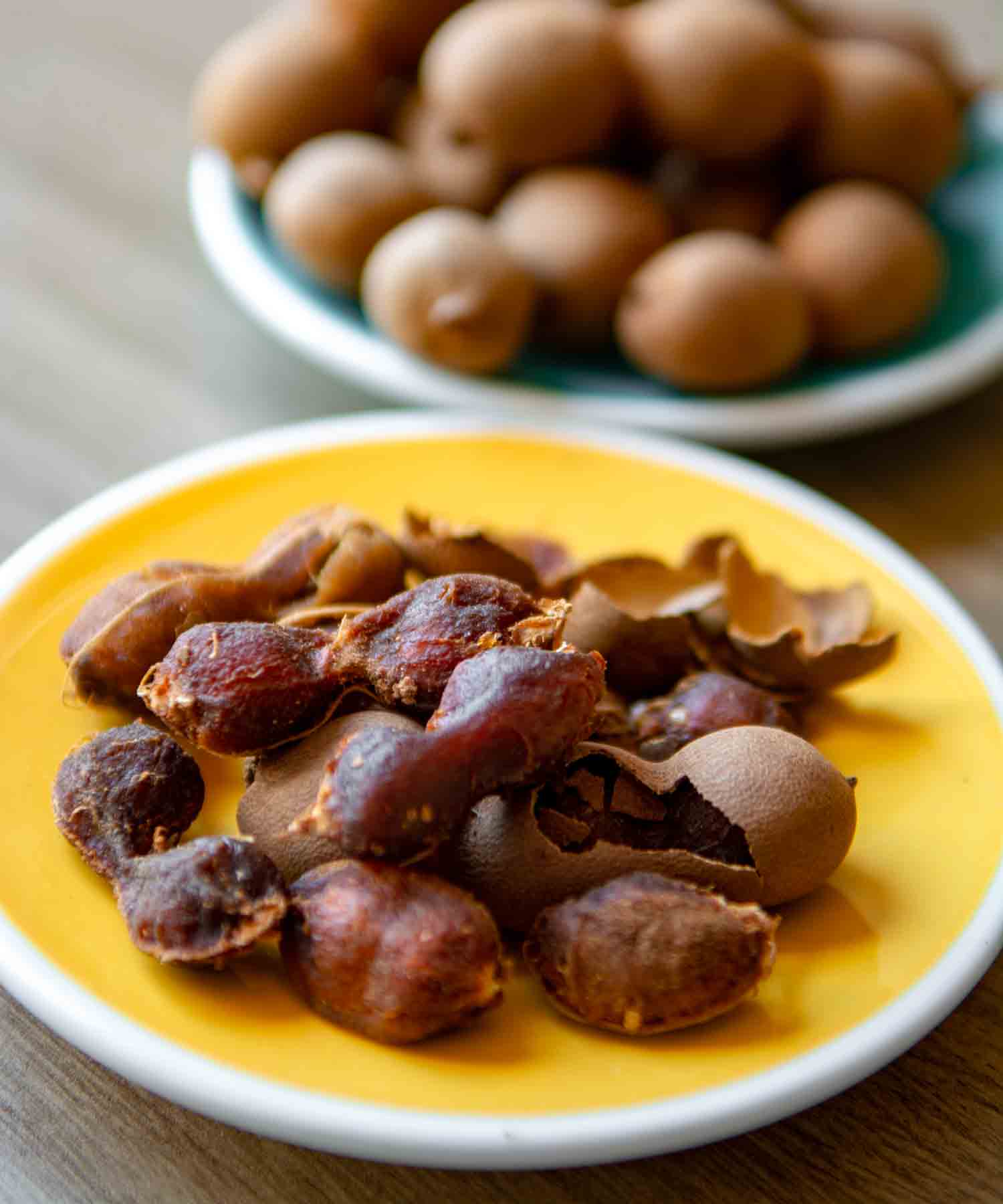
Tamarindo aka Tamarind
Not to be confused with the tourist town in the Guanacaste province in the north, I first discovered tamarind in Mexico.
It has a long, brown pod-like shell that protects the sweet and sour fruit.
How to Eat Tamarindo
You can find it everywhere as a juice, it is often turned into a syrup or cooked into a dessert and often covered with candy as a sweet treat.
‘Anona
Many Costa Rican fruits are part of the anon family, this one is one of the most famous as it has a delicate fresh flavour that is sometimes described as rose water.
The exterior almost looks like an artichoke that begins green and starts to darken as it ripens.
It is creamy but also citrusy. Some say like a coconut banana mixed with lime.
How to Eat Anona
The exterior is inedible, but the white fleshy interior can be eaten with a spoon.
Nanzi aka Nance
A small yellow fruit native to Costa Rica, it is popular with locals but has a strong flavour for tourists.
Found in the Guanacaste region, it looks like a large yellow berry.
Nance is high in Vitamin C, K, thiamine, riboflavin and folate.
The leaves of the Nance tree are also used to make a tea to help alleviate a number of ailments from fatigue to anemia.
How to Eat Nanzi
It is most often preserved in jam or jelly but is also popular to preserve the guaro, the local spirit or to make liqueur or wine.

Manzana de Agua aka Malay Apple
Although the Spanish name technically translates to water apple it is more commonly known as malay apple in English.
It was one of the first Jamaican fruits I tried, and I discovered it is also called rose apple, mountain apple, pommerac and Otaheite or Jamaican apple in Jamaica.
If you haven’t noticed yet, Costa Rica and Jamaica share a lot of the same foods – especially in the southern slope of Costa Rica in spots like Puerto Viejo.
Manzana de Agua looks like an elongated apple and tends to be a bit less dense and more watery than an apple we typically see in North America.
How to Eat a Manzana de Agua
It is used quite typically as any other apple and is delicious raw. Interestingly in Puerto Rico they use it to make wine.
Cas or Sour Guava
If you could choose one juice to represent Costa Rica it would be cas, it’s the one most offered in restaurants. It’s so common it’s often referred to as the Costa Rican guava.
Sour guava grows nearly all year long and is in season December to February and June to August. It is very sour, as much as a white grapefruit or a fresh lime.
How to Eat Cas
You can eat it as a sour fruit with a bit of salt; however, it is much more common as a juice with lots of sugar.
Also, many sour guava have a white worm inside, it’s completely normal but can be off-putting to people eating it for the first time.
‘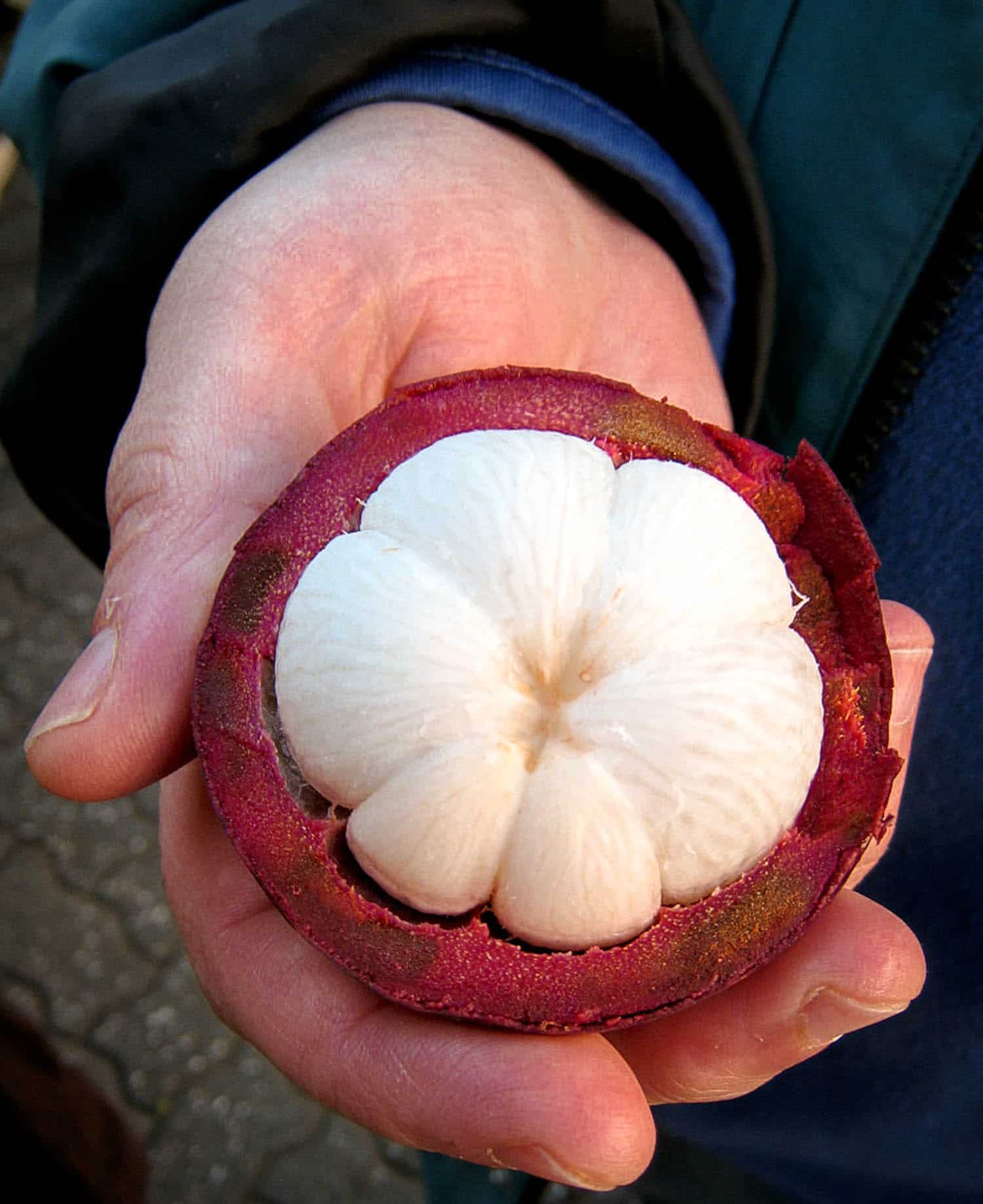
Mangostán aka Mangosteen
Originally from Indonesia and Malaysia, you can find mangosteen in Costa Rica.
However, Mangosteen has one of the shortest seasons in Costa Rica. It is only available during rainy season, around December.
It is about the size of a plum with a thick leathery purple shell that requires a sharp knife to cut through.
But it is worth the effort, this Costa Rican fruit is one most beloved and often called the Queen of Fruits.
The flavour is somewhat like a peach mixed with a strawberry. It is known to be a powerhouse of antioxidants, which people believe help prevent cancer and cure inflammation.
How to Eat Mangosteen
Cut around the fruit with a sharp knife and peel off the top half to reveal the fleshy white pods.
Some of the larger pods have seeds, which you should spit out.

Cacao
Although many people have had cacao in roasted form, I had not eaten it as a fruit until I visited the indigenous Bribri community in Yorkin.
You can buy the cacao fruit from farmers markets. It has a creamy, fruity flavour and tastes nothing like chocolate.
How to Eat Cacao
You could roast it and process it into chocolate.
However, it is an intensive process so it’s best to cut the fruit lengthwise and you can pull out the pods and suck on them then spit out of the seeds.
‘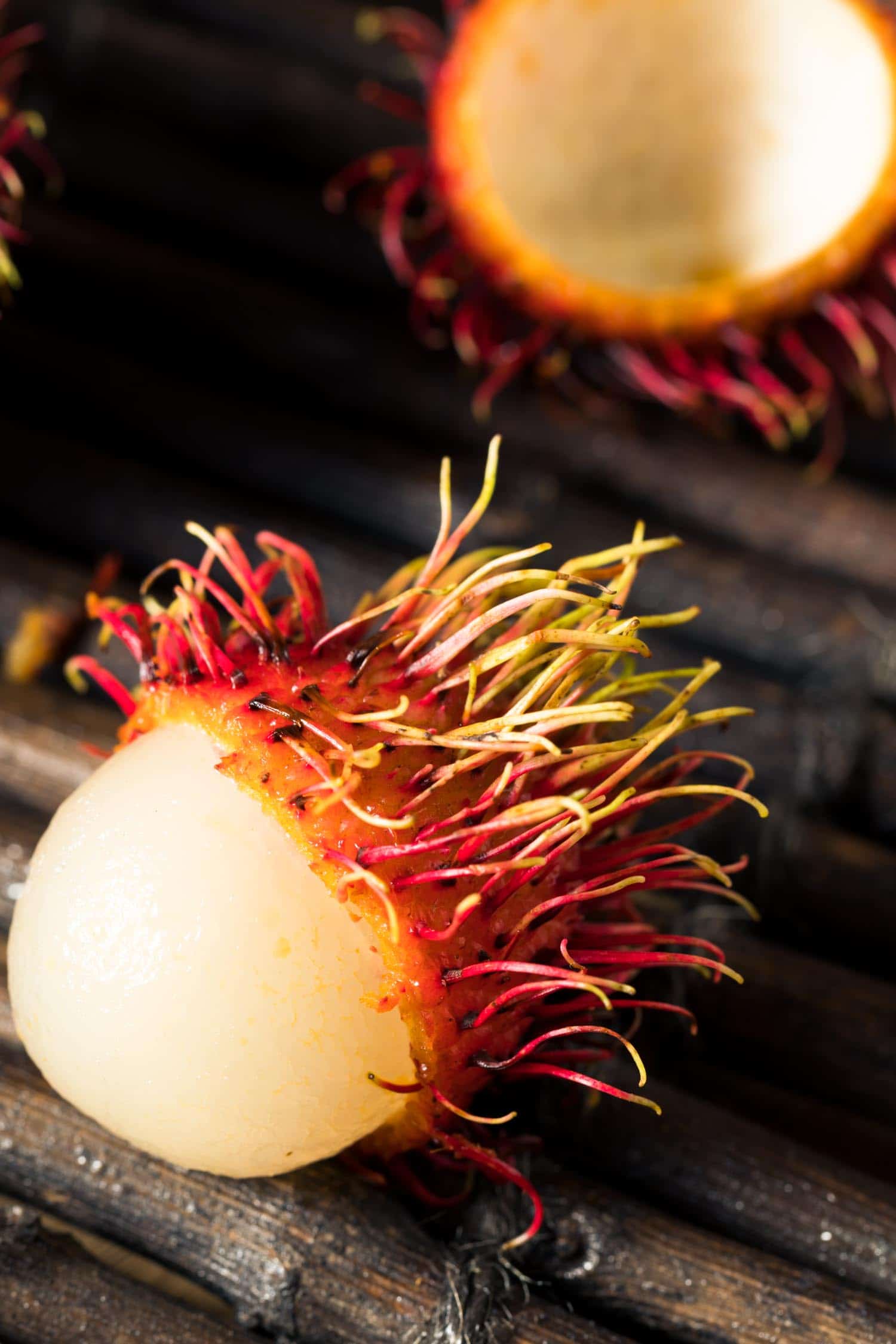
Mamon Chino aka Rambutan
Originally from Asia mamon chino is a common Filipino fruit and popular fruit in Bali. This is one of the funkier looking fruits in Costa Rica, many say rambutan looks like a hairy lychee fruit
You can find them red, orange or even yellow depending on the time of the year.
Thankfully you don’t eat the exterior, but pop it open and you’ll find a smooth white fruit that looks like a lychee or peeled grape.
The mamon chino’s flavour is sweet and just a bit tart.
You can find mamon chino from July to September.
How to Eat Rambutan
Mamon chino are almost always eaten raw and are often sold in small bags for snacks.
Open the fruit with your fingers and put the pod in your mouth to suck on. Spit out the pit as it is inedible.
‘Pin it: Costa Rica Fruits
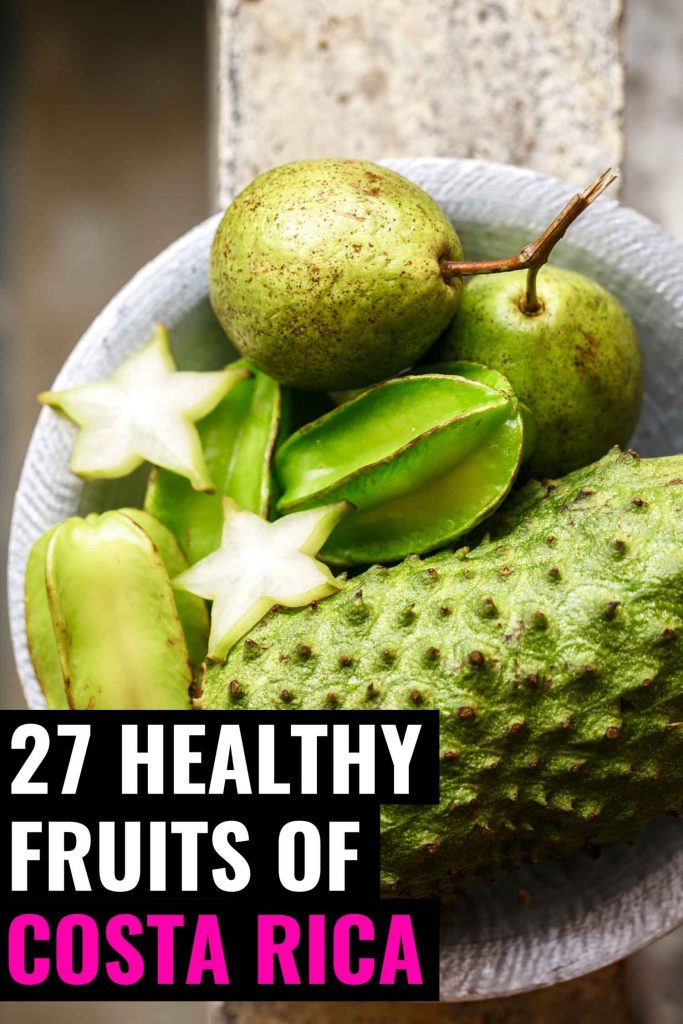
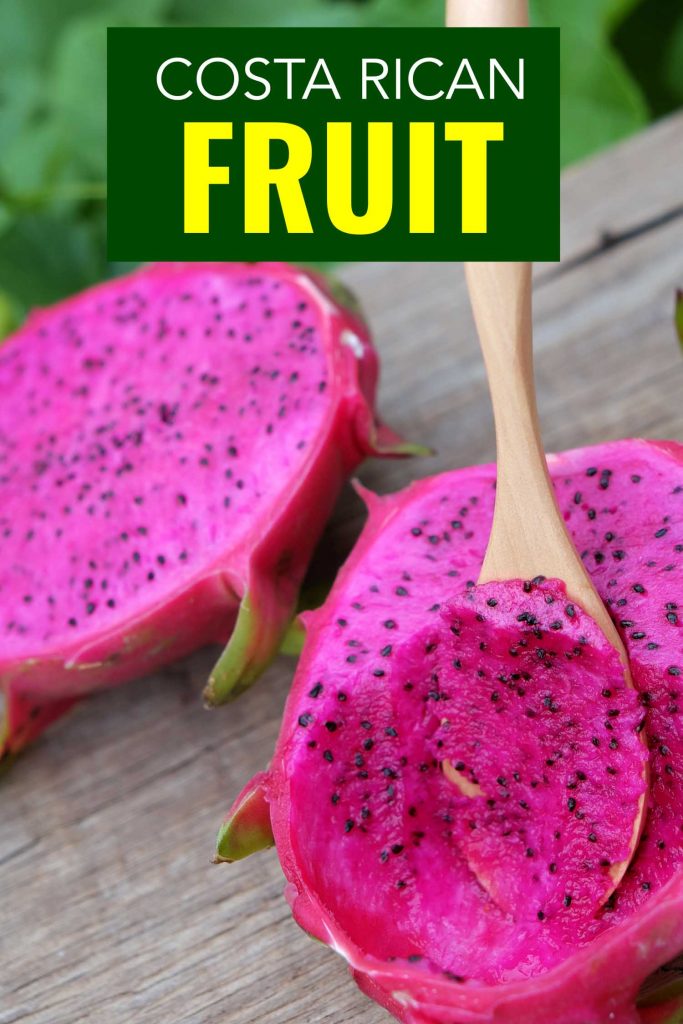
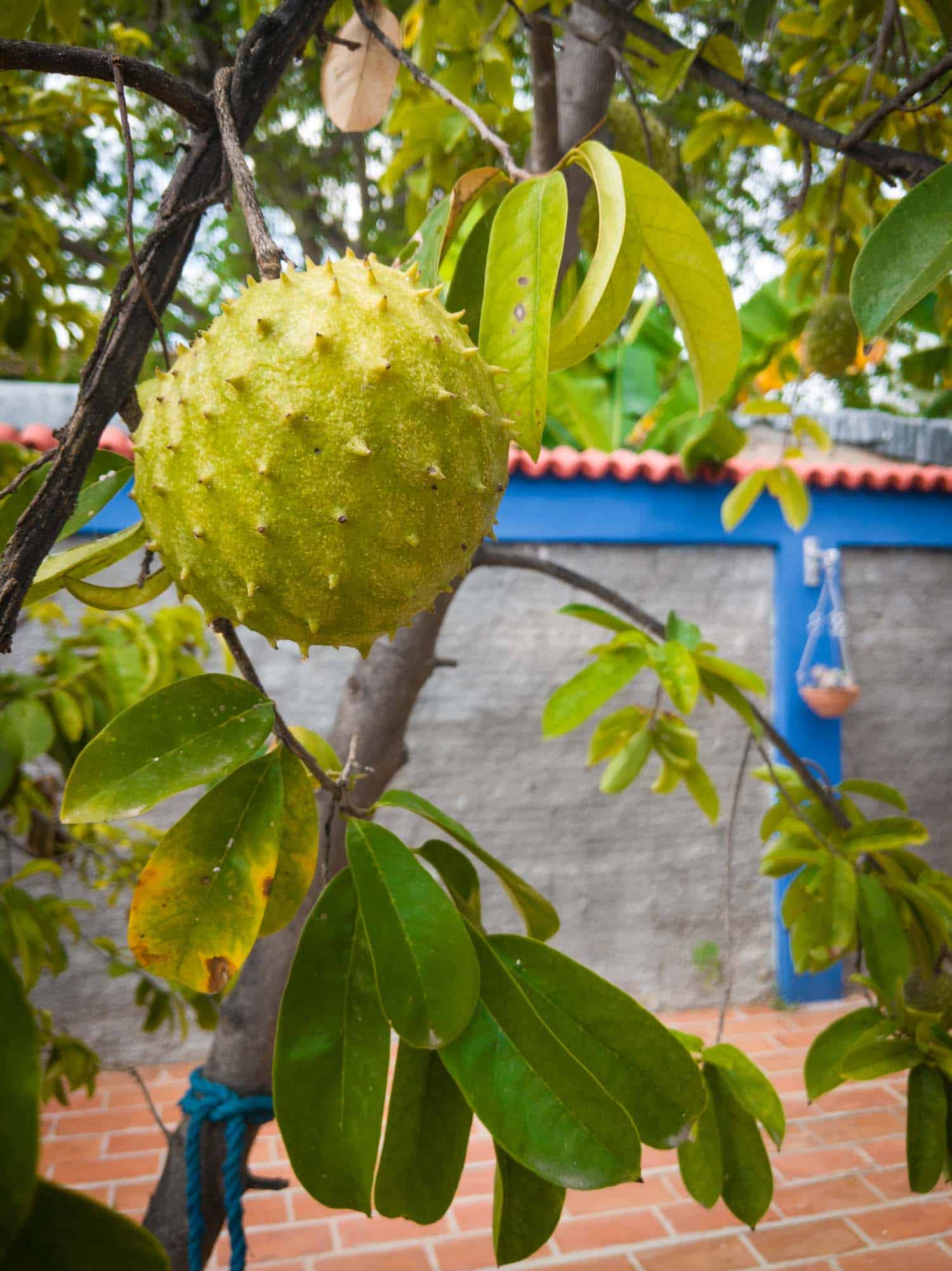
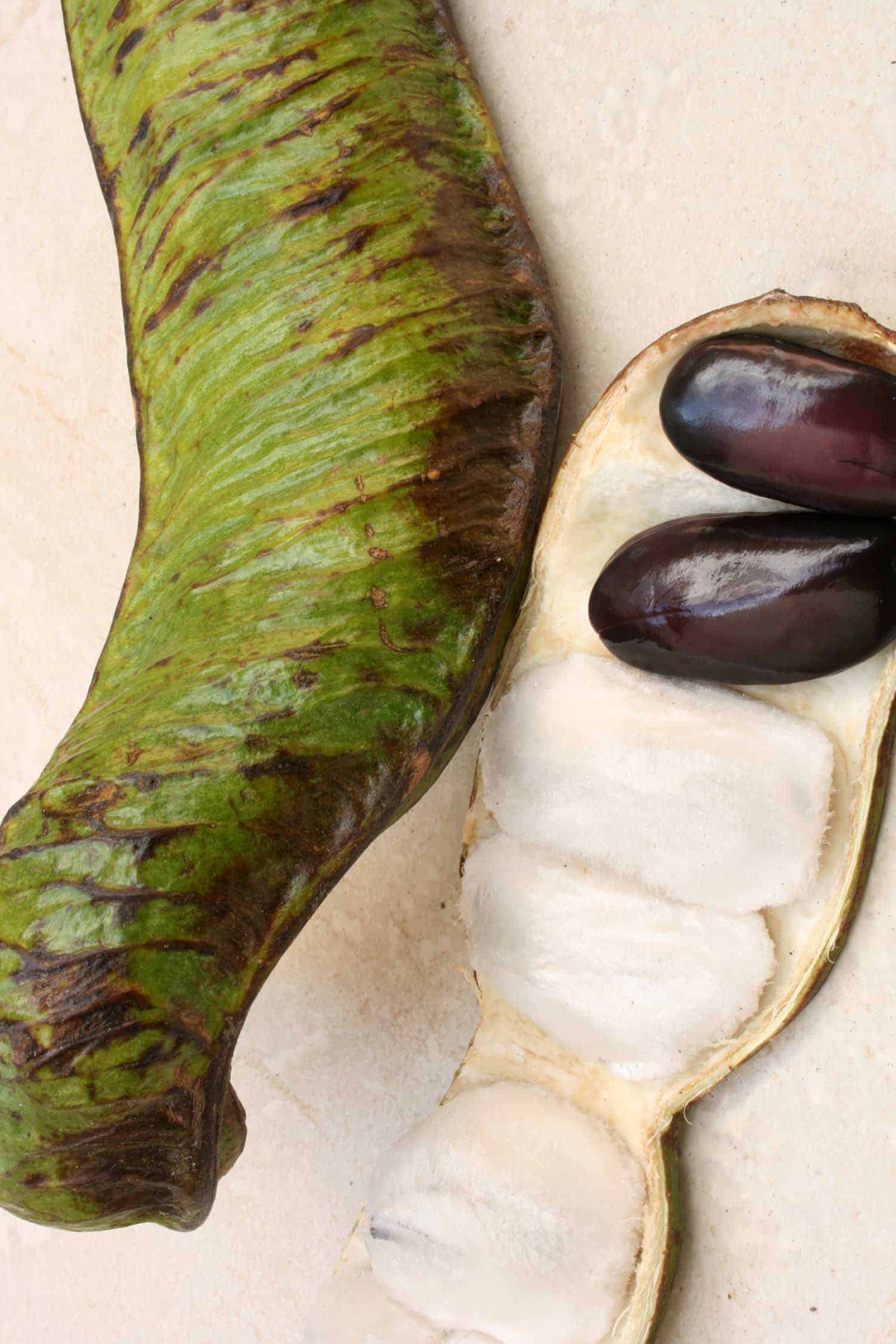
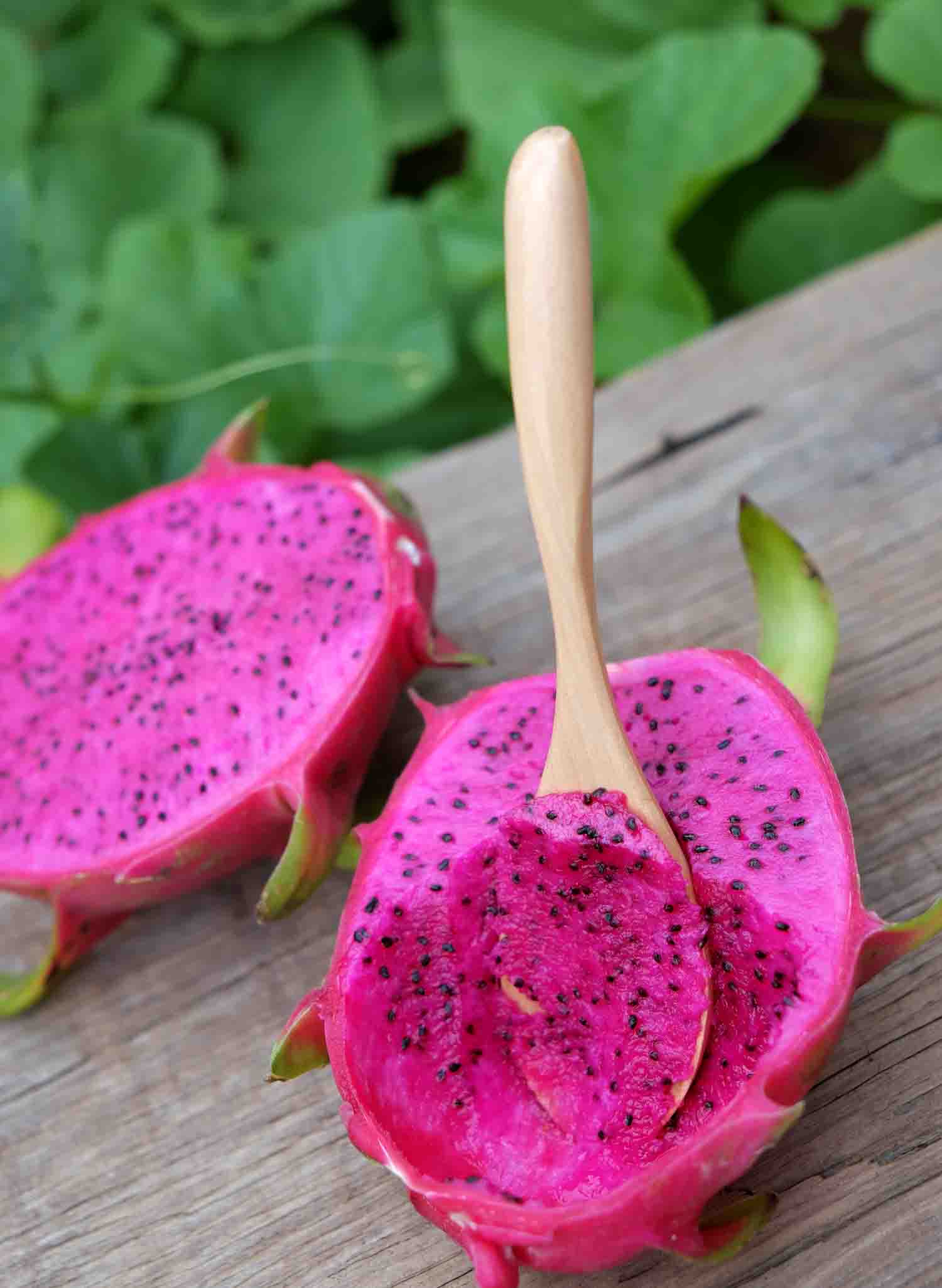

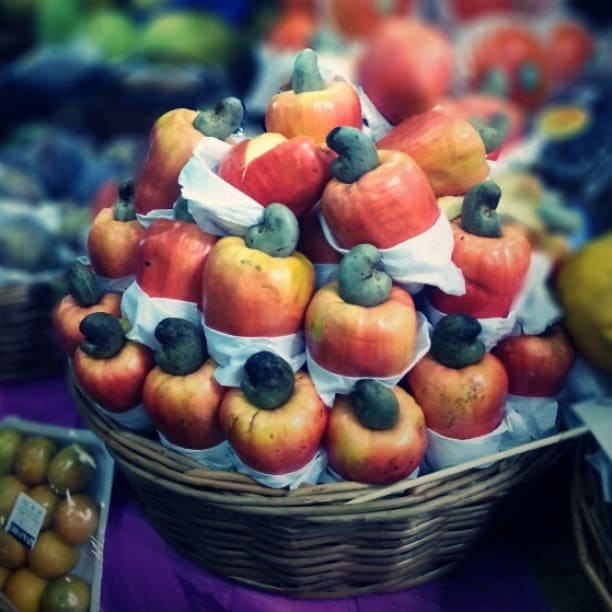
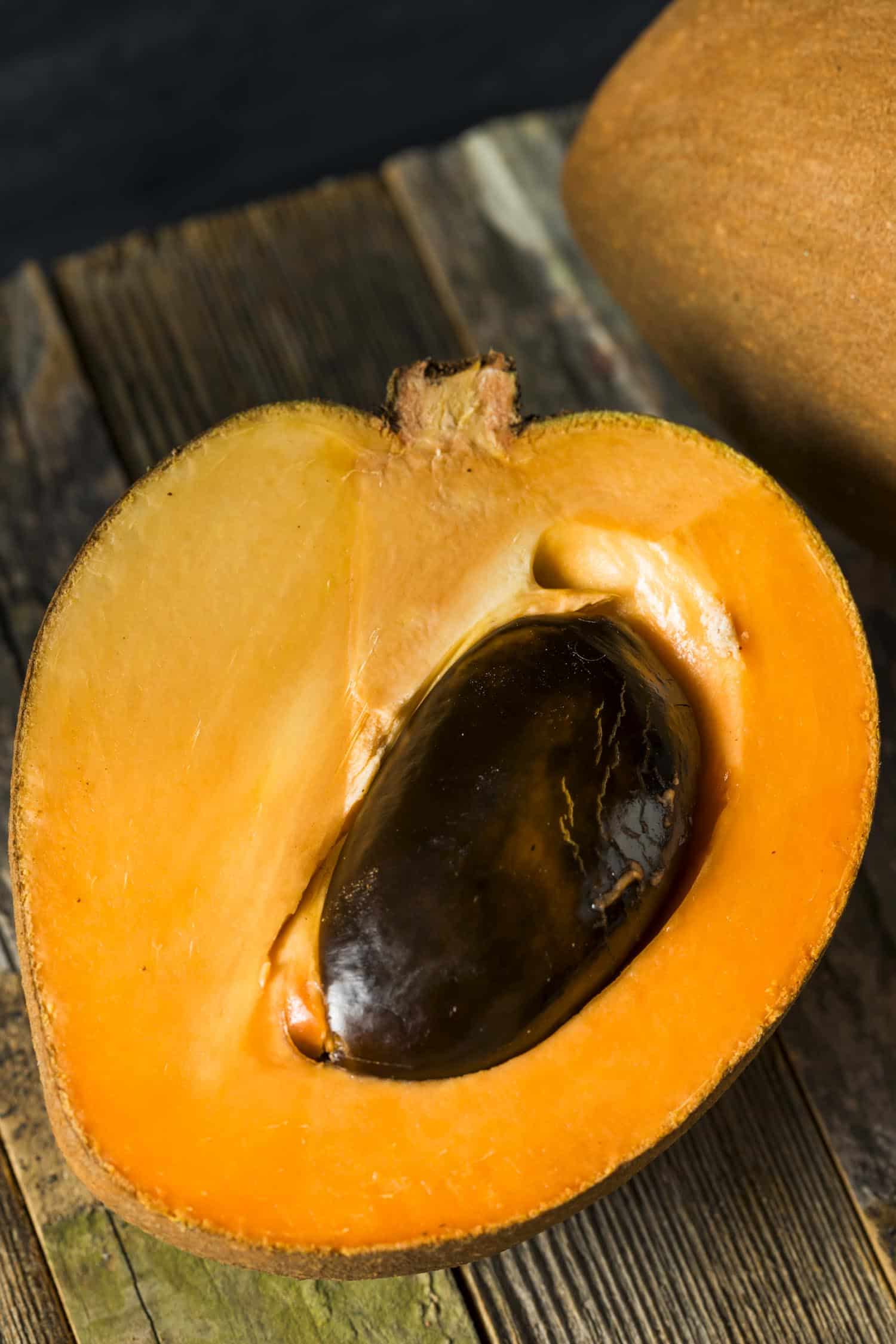
A fun challenge! Kind of a shame some of these aren’t more available… If you had to name one fruit that was the **tastiest**, which would it be?
i have tried almost all of these. My favorites are Mangosteen and some varieties of Annona.
Hi, Where in CR did you find Mangosteen?
You can find it throughout but it’s not common and has a very short growing season – it can be as short as 4-6 weeks.
Hello!
What is the very top first yellow little fruit called? I just came home from Costa and had this the day we left and it was delicious. I just cannot remember the name! I believe it stared with an O.
It looked like a tiny baby yellow tomato, but it was a sweet fruit. Thank you!!!! 🙂
These are naranjilla, also called lulo in some countries.